Understanding your Child’s Temperament
Temperament refers to those aspects of an individual’s personality that are often regarded as innate, rather than learned. Any human being, for example, is somewhat predisposed to being an introvert (shy) or an extrovert (outgoing).
Some children appear to be naturally calm, predictable, and approach most new experiences in a positive way. Other children may appear more difficult, and seem somewhat unable to manage their emotional experiences with ease. It can be hard on a family when one child’s personality goes against the grain of all the other family members.
Generally speaking, temperament is an innate quality of the child, but is can be somewhat modified (particularly in early years) by the child’s experiences and interactions with others and by his health. That being said, one’s temperament is fairly well defined by the time a child begins to attend school. The behavioral adjustment of a school-age child depends a lot upon the interaction between his temperament and yours, and how others respond to him.
It’s extremely important to be aware of some of the characteristics that make up one’s temperament so you can understand – and appreciate – the uniqueness of your child, and how to deal with problems of poor “fit”.
Let’s explore nine major characteristics that make up one’s temperament.
- Mood: the degree of pleasantness or unfriendliness in a child’s behaviors or words
- Attention span: the ability to concentrate on a given task with (or without) distraction.
- Activity level: the level of physical activity, restlessness, motion, or fidgety behavior that a child demonstrates during daily activities. The presence (or absence) of a consistent pattern for basic physical functions such as sleep, appetite, and bowel habits.
- Intensity: the energy level (positive or negative) with which a child responds to a given situation
- Sensory threshold: the amount of stimulation that is required for a child to respond.
- Adaptability: the degree of ease (or difficulty) with which a child adjusts to changes or new situations, and how well the child can modify his or her reaction.
- Approach and withdrawal: the way a child initially responds to a new stimulus (slow and hesitant or rapid and bold). The stimulus can be situations, other people, foods, places, or changes in routines.
- Distractibility: the ease with which a child can be distracted from a given task by environmental factors (auditory or visually).
While everyone has a different makeup of the nine temperament characteristics listed above, many children can fall into one of three broader categories: easy, slow to warm up (shy), or difficult/challenging. While these labels may be a useful way to understand – and discuss – your child’s temperament, it’s important to realize that they don’t offer a complete understanding of your child.
It is equally important to learn how to distinguish a temperament from other possible problems. Recurrent illnesses; as well as emotional and physical stresses; can cause behavioral difficulties. These difficulties are often not related to temperament at all and require a different approach.


